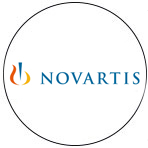
Collaboration in Big Pharma might seem like anathema for some who think of the regular patent litigation headlines that the industry produces. However, the sector is seeing an increasing number of peer-to-peer collaborations, and researchers at the Novartis Institutes for BioMedical Research (NIBR) have championed open research collaborations between entities. For example, as well as the diabetes collaboration in 2007, Novartis has made detailed in formation relating to hundreds of cancer cell lines available to all cancer researchers.
The company views such collaborations as a strategic benefit, says group general counsel Felix R. Ehrat, albeit one that is hard to quantify. ‘It really is about bringing the best brains to the table with as few as possible constraints,’ he says, adding that ‘protection of intellectual property has its place, but not necessarily in these types of collaborations.’ And rather than reluctantly ceding IP ownership, the legal team has been an enthusiastic enabler of this process: ‘We would do a favour for [non-Novartis] researchers by providing materials or access to NIBR processes and facilities.’ The legal team developed an ‘in kind’ letter which provides a contractual basis for open information exchanges to occur. ‘Intellectual property remains with whoever invents it. No strings,’ Ehrat explains.
Of course, a delicate balance must be struck between the needs of the wider scientific community and those of the business. This is an industry where the development of new molecules and compounds gobbles up billions of dollars and the development phase can last for 15 to 20 years, with the risk of failure ever-present for investors. So while opening up the R&D arena can be incredibly powerful for innovation, when the time comes to develop a new medicine, the Novartis legal team gets the rights and protects its IP fiercely.
In walking this line, Ehrat’s team must act as a close partner with the organisation. It has a matrix structure, with lawyers embedded within the business and closely interacting with it. ‘It’s about partnership,’ he says. ‘Our concept of legal is that we are a trusted business partner. We are supporting the business in its ventures and developing them jointly. “No” might be an answer if the ultimate objective is incompatible with the laws and regulations, but if it’s only a question of how to get there, then “no” should never be an answer.’
Developing alignment with business strategy is something that Ehrat believes should be fundamental to a legal department that supports innovation, and is something he has worked hard for as general counsel. Of course, it’s not always easy. ‘There are always tonnes of challenges, because it’s often uncharted territory. You will always have resistance if you are proposing something nobody has ever done.’ He emphasises the importance of aligning the risk appetites of legal and the business and also, fundamentally, agreeing a common objective on the project.
To achieve an all-important holistic partnership that covers reputational and sustainability issues as well as legal risk, Ehrat recommends that GCs work on the perception of the legal department internally, and find out whether it is considered a trusted peer by internal clients. To do this, ‘you have to deeply understand the business – which may seem very obvious, but it is not always a given,’ he warns. Then, he believes, ‘if legal and the business are together jointly in the partnership, you will find the right solutions that create value for the company and patients.’

